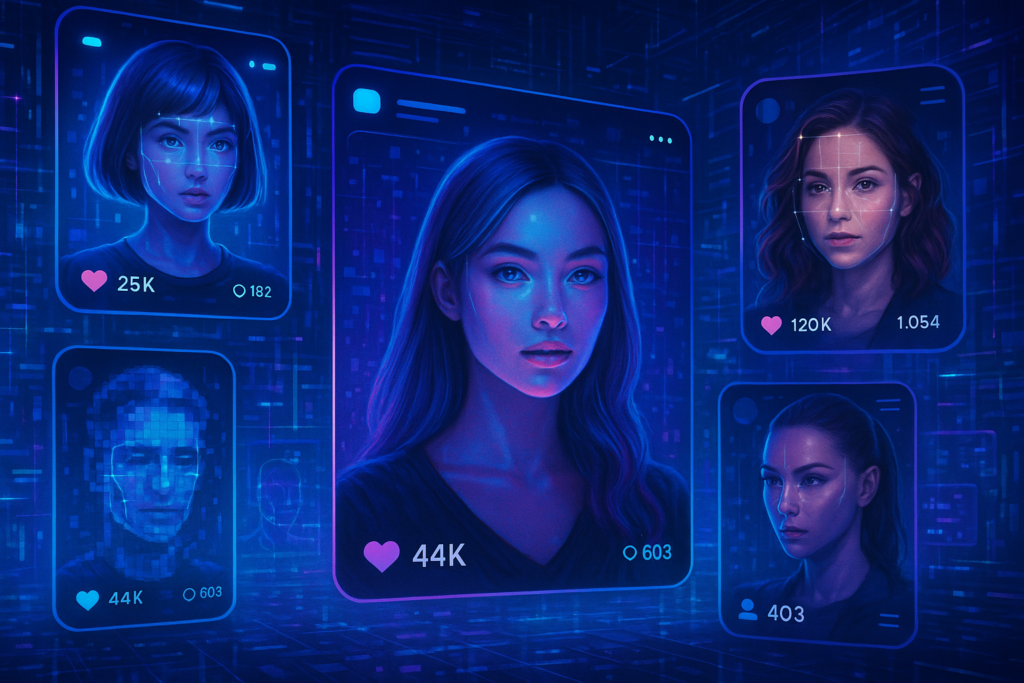AI in Cybercrime : How Hackers Are Using AI Against You
Artificial Intelligence (AI) is reshaping the world—but not always for good. While it powers smart assistants, automation, and innovation, cybercriminals are now weaponizing AI to launch smarter, faster, and harder-to-detect attacks.

In 2025, cybercrime isn’t just about stolen passwords or fake emails. It’s about AI-powered scams, deepfake extortion, and intelligent malware. In this article, we’ll uncover how hackers are using AI against you, and what you can do to protect yourself.
🤖 How AI Is Fueling Modern Cybercrime
AI gives cybercriminals three big advantages:
- Speed – AI can automate tasks like phishing and brute-force attacks.
- Scale – Hackers can target thousands of victims instantly.
- Sophistication – Machine learning helps attacks adapt and improve.
Let’s break down the most dangerous ways AI is currently being used in cybercrime.
1. 🎣 AI-Generated Phishing Attacks
Traditional phishing emails were easy to spot. Now, AI-generated phishing uses language models to craft flawless, personalized messages.
🚨 How it works:
- AI scans social media or leaked data to customize emails.
- Messages look like they’re from your boss, bank, or a known brand.
- AI chatbots can even hold conversations in real time.
🔐 Protect yourself:
- Be cautious with links and attachments—even from familiar names.
- Use email security tools with AI phishing detection.
- Enable two-factor authentication (2FA) everywhere.
2. 🎭 Deepfake Scams & Voice Cloning
Hackers now use AI-generated deepfake videos and cloned voices to impersonate people in video calls, phone conversations, or social media.
💣 Real-world danger:
- Fake voice from your CEO asking for an urgent bank transfer.
- Deepfake video of a friend in distress asking for money.
- Politically motivated fake content for blackmail or manipulation.
🔐 Stay safe:
- Verify requests through a second communication method.
- Be skeptical of emotional urgency in digital requests.
- Use deepfake detection tools and multi-level identity checks.
3. 🦠 AI-Powered Malware
Malware in 2025 is no longer static. It learns, adapts, and hides using AI.
🧠 Smart features:
- Detects antivirus software and rewrites itself to avoid detection.
- Mimics user behavior to avoid triggering security alerts.
- Analyzes system weaknesses faster than traditional tools.
🔐 Protection tips:
- Use next-gen antivirus and endpoint protection that includes AI detection.
- Regularly update your software and OS to patch vulnerabilities.
- Avoid shady downloads or pirated content.
4. 🕵️♂️ AI for Social Engineering
AI can now mimic human interaction across platforms. Cybercriminals use chatbots and fake personas to build trust with victims.

📱 Common tactics:
- Romance scams using hyper-realistic AI profiles.
- Fake customer support chats stealing login info.
- AI bots imitating job recruiters or tech support reps.
🔐 What to do:
- Don’t overshare online—especially on LinkedIn or dating apps.
- Research people or companies before engaging.
- Report suspicious profiles or interactions.
5. 🧠 Predictive Hacking
Hackers use AI to analyze patterns and predict human behavior—from passwords to when you’re most likely to click on a link.
⚙️ Examples:
- Guessing passwords based on leaked data and online behavior.
- Sending phishing emails at peak stress hours (like Mondays at 9 AM).
- Exploiting known vulnerabilities faster than humans can patch them.

🔐 Defense strategy:
- Use random, unique passwords for every account (with a password manager or use duo mobile app. ).
- Update software and enable auto-patching where possible.
- Use anomaly detection systems for businesses.
🚧 Final Thoughts: AI Is a Double-Edged Sword
AI isn’t inherently dangerous—but in the wrong hands, it’s a powerful weapon. As AI in cybercrime continues to grow, it’s crucial for individuals and businesses to stay informed and adopt smarter cybersecurity habits.
Just as hackers evolve, so must your defenses. Stay proactive, stay updated, and never underestimate how creative cybercriminals can be when powered by artificial intelligence.




